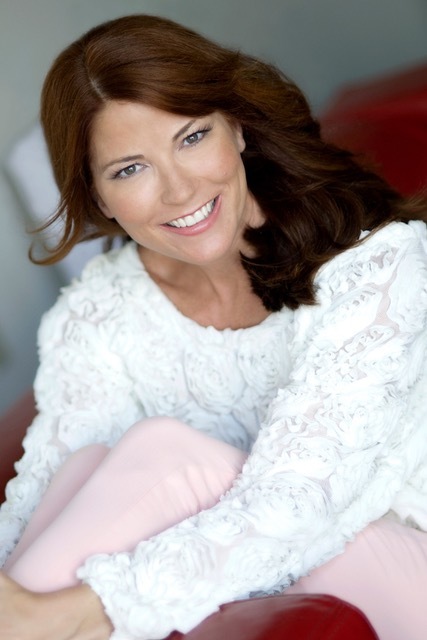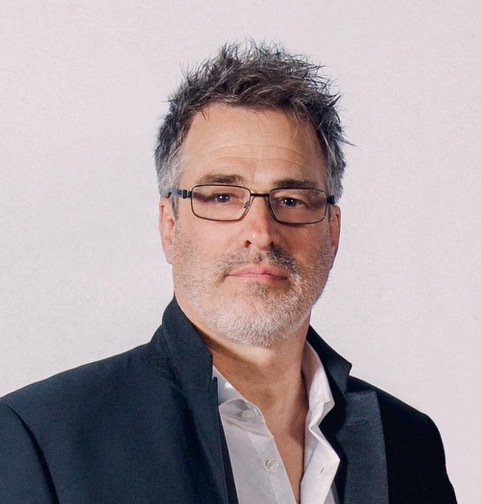Eek! You Just Know Off-Camera Disaster Lurks in a Pair of Hilarious TV Spots for a Children’s Emergency Center, but the Hilarity and Danger Create a Marketing Triumph
// By Peter Hochstein //
 How brave do marketers have to be to use humor in a spot for pediatric emergency care that shows kids flirting with danger?
How brave do marketers have to be to use humor in a spot for pediatric emergency care that shows kids flirting with danger?
Uh oh! Trouble in the backyard.
On a steeply sloping patch of lawn, three girls who appear to be the right age for middle school have erected a slip-and-slide. It’s made out of plastic sheets, a shower curtain, and plastic hoops, all dead-ended at the bottom of the slope by a pile of concrete cinderblocks. One of the girls is lubricating the plastic sheets with a squirt bottle.
“What’s the best time?” asks a girl at the top of the slide. She’s wearing a bathing suit and protective goggles, an intensely determined expression on her face as she prepares to leap. A friend tells her it’s 4.9 seconds.
“Light it,” says the goggled girl grimly, and with that, one of the hoops that the girl will have to slide through bursts into flame.
What could possibly go wrong?
Actually, a lot went right for this spot for the Tallahassee Memorial Children’s Center, part of Tallahassee Memorial Healthcare, and for a companion spot featuring boys of a similar age encouraging one of their companions to bobsled down a long staircase in a plastic laundry basket.
You can view the spots here:
and here:
Why Do Comic Spots That Highlight Danger Work?
Reassuring voice-over copy helps the spots along.
“At Tallahassee Memorial Children’s Center, we’re affiliated with Wolfson’s Children’s Hospital, which means access to board-certified pediatric emergency physicians and resources of one of the nation’s top-ranked children’s hospitals. As long as kids will be kids, we’ll be ready.”
Or perhaps the humor, growing out of kids who are about to plunge into deep trouble, sparks such a glimmer of recognition that it causes most adults to smile and nod knowingly, rather than to shudder.

Stephanie Derzypolski, vice president, chief communications and strategy officer, Tallahassee Memorial Healthcare
The ads were created by The Mitchells, a Tallahassee advertising agency that has been working for Tallahassee Memorial Healthcare — TMH for short — for an extraordinary 49 years. That long-term relationship also has something to do with the story. But let’s start at the beginning.
TMH had been associated with Wolfson Children’s Hospital in Jacksonville, Florida, for several years. But when TMH opened a new children’s emergency center, it seemed like the perfect opportunity to publicize the relationship between the two hospitals with an advertising campaign. And so, in the summer of 2018, TMH and The Mitchells launched these two spots, along with some companion print, outdoor, and internet advertising.
The advantage of the affiliation with Wolfson was clear. “In our region they are well known and very well respected,” says Stephanie Derzypolski, vice president, chief communications and strategy officer for TMH. “They’re one of the U.S. News & World Report’s top 50 hospitals. We were very fortunate to be able to affiliate with them.”
That affiliation is “the exclamation point on their capability at TMH,” adds Robin Stefanovich, president of The Mitchells.
Targeting the Right Audience

Robin Stefanovich, president, The Mitchells
To make certain that exclamation point would be seen and heard clearly, the agency executed media buys that primarily target women over the age of 18 who have children under the age of 15. But Derzypolski points out that there was a secondary audience, as well. “We wanted to target the adults in families, even some grandparents,” she says.
Consequently, the media mix also included the local newspaper and magazines such as Tallahassee Woman, and the outdoor billboards. Ads were tailored to the medium. For example, it’s pretty difficult to get across the drama and humor of some kid-designed obstacle course and the traumatic mayhem it’s about to unleash in a billboard that people are passing at 50 mph, so the advertising is simpler — such as a girl with a wry expression, a small bandage on her forehead, and a headline that says “An E.R. just for kids.”

In a static outdoor advertisement, just the right facial expression and a small bandage maintain the “mischievous kid” spirit of the campaign.
Web Visits Up 81.6 Percent
The campaign did so well — prompting an 81.6 percent increase of visits to the children’s section of the TMH website, according to Robin Stefanovich — that the hospital and agency ran it again during the summer and early fall of 2019.

Erich Stefanovich, chief creative officer, The Mitchells
The kids’ deadpan performances seem to add power to the spots. They’re all professional actors, recruited in Atlanta, which Backstage has dubbed “one of the hottest emerging markets in the film and television industry,” with a “piping hot” acting scene.
But it’s the authenticity of the situations — kids doing stuff they probably know deep down that they shouldn’t do, and that many adults can identify with their own childhoods — that makes these situations acceptable to the adult audiences.
Do the advertisers run the risk of alarming audiences?
“It’s not risky if it’s the truth,” says Erich Stefanovich, chief creative officer at The Mitchells, and Robin’s spouse. “We all were kids once. We all did risky things. When we’re all part of the humor, no one’s the butt of the joke.”
“I can only imagine the heart attacks he gave his mother…”
Robin Stefanovich
The MitchellsRobin Stefanovich adds, “Erich is a rough and tumble kind of guy. I can only imagine the heart attacks he gave his mother as a child. The stair and laundry basket scene was something out of his childhood.”
She also says kids placing themselves in unnecessary danger is so commonplace that when the agency presented the advertising to the hospital, one of the hospital marketing team members volunteered that he played a dangerous game called “hot lava” during which kids jumped from pieces of furniture to other pieces of furniture.
Further, on both the hospital and agency side there’s agreement that the 49-year relationship between the two has led to a sense of mutual trust and confidence. They share a kind of institutional memory as well, which helps to maintain a common mindset. “Trust really allows us to push the envelope,” says Erich Stefanovich.
There were only “about three people in the community who expressed concern to the hospital,” Derzypolski says. “My response is, thank you for taking the time to talk about it with me. I remind them our campaign is targeted to adults, not children. I explain where the spots are placed. It really is targeting adults. Hopefully it’s interesting and different and a standout to adults, so that adults will remember it. It has to be quirky and funny to stand out.”
Trust Your Gut
“When the Mitchells shared this concept, it cracked me up, and I thought it was funny,” says Derzypolski. “You have to trust your gut that our community will also think this is funny, because it’s appropriate to the situation. A lot of children’s emergencies can be humorous. Just trust in yourself and go for it.”
Derzypolski also shared this thought: “We were careful not to use the word ‘pediatric,’ which is a medical term. We wanted a lighthearted, friendly campaign. I think ‘children’s’ is more relatable to the average person. People relate much more to the term ‘children’s’ over ‘pediatric.’”
Peter Hochstein is a direct-response advertising consultant, business journalist, and author. He is the author of Lessons from 9 Innovative Health Care Marketing Campaigns. You can reach him through his website: http://peterhochstein.com.

